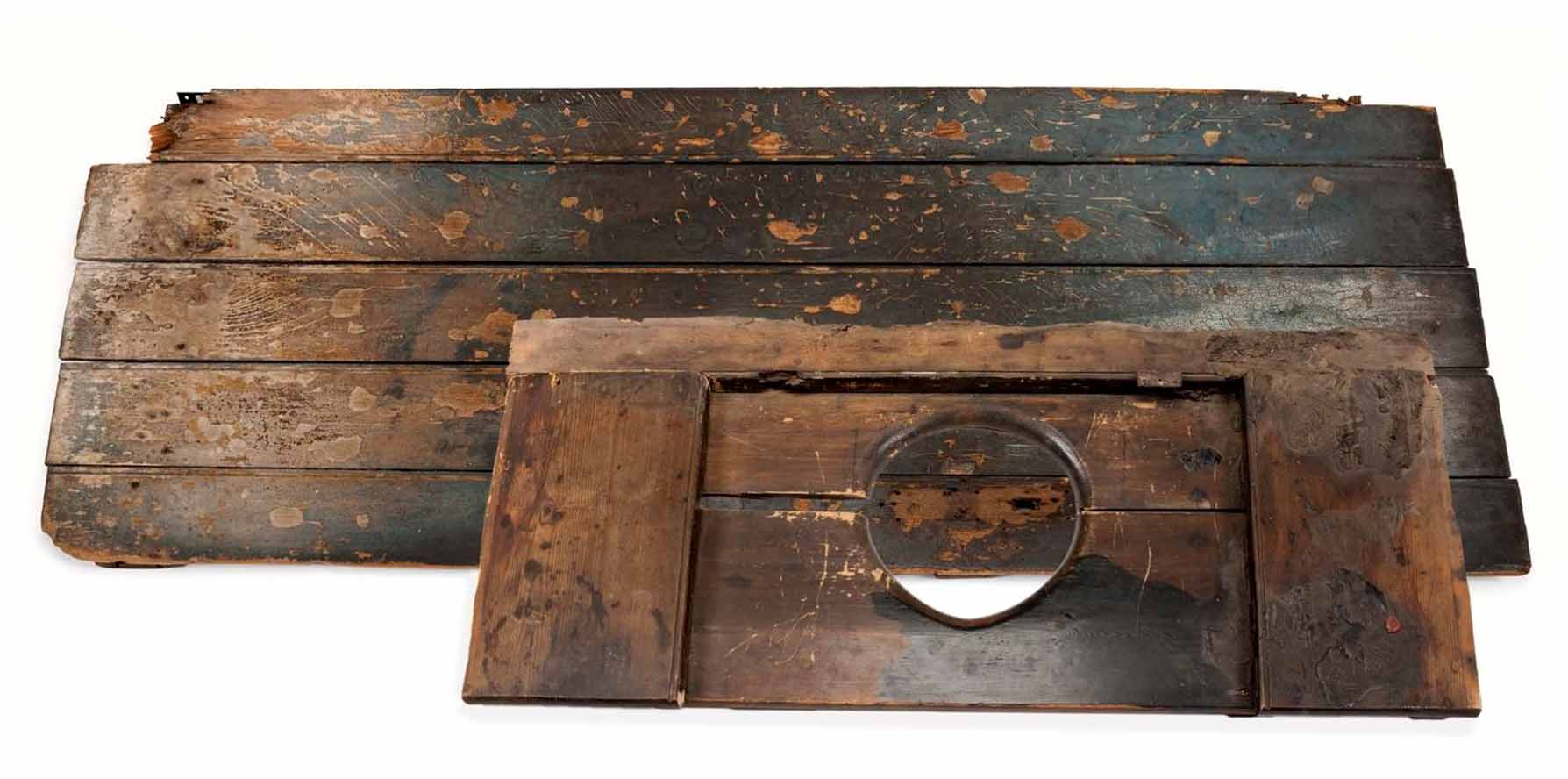We have all doubtless suffered from ‘nuisances’ in our lives; however, we might like to spare a thought for our ancestors and neighbours living in Southam and the surrounding villages in the nineteenth century and before.

Science Museum Group. Seat and door from outdoor privy. 2016-2010 Science Museum Group Collection Online.
At this period in British history, one of the greatest blights on the nation was the prevalence of Cholera with its tragic effects. The disease had claimed more than 100,000 lives by the 1850s, so it was considered to be a very serious contagion that spread rapidly. Despite legislation to make vaccinations compulsory, there were cases recorded throughout the area of what were described as ‘nuisances’ – potential sources of the disease emanating from various premises. One example in the 1850s involved a butcher in Southam, Charles Plummer, whose ‘privy’ was discovered to be the source of a ‘nuisance.’ His shop was closed until the source had been inspected, thoroughly cleaned, disinfected and re-inspected.
To deal with similar problems and to comply with the Nuisances and Diseases Prevention Act of 1848, a Mr William Beckett was appointed in 1853 as the local Inspector of Nuisances on a salary of £2 per week. He was empowered to work throughout the area and to take proceedings before a magistrate to ensure the removal of all nuisances. A nuisance was defined as a condition where an individual was denied the right to use his or her own land by, for example, rubbish heaps, blocked drains, discarded refuse, stagnant water and drains, foul smells, cesspits and suchlike, occurring elsewhere, usually on neighbouring land.
By December 1867, the Inspector of Nuisances had recommended that steps be taken to remedy what he described as the ‘foul drains’ in Southam. The same applied to local villages; the authorities wrote to James Hickson, a market gardener of Harbury, warning him that he had one month to abate the nuisance on his premises due to insufficient drainage, or he would face legal proceedings. Further, in September 1871 at Priors Hardwick, a privy was identified in a cottage belonging to John Burden and occupied by Thomas Sharpe, which had no proper cesspit or drain, ‘a nuisance injurious to health.’
In the same year in Bishops Itchington, cottages belonging to a grocer, Henry Pearson, were reported to have no drains, as was the case in four other properties owned by him. He was summonsed and given fourteen days to comply to clear the ‘offensive nuisance.’ Similar properties in the area had drainage problems, all of which were considered breeding grounds for infection. In Southam itself, there were charges against the Coach and Horses in Market Square (offensive stables), and against the owners of dwellings in Daventry Road and Ladbroke Road in the 1880s.
Despite these instances and many more recorded, a Dr Wilson of the Local Government Health Board was able to state: ‘… there need not be the slightest fear of a Cholera invasion in the area!’ We can be grateful that now, at least, the prevalence of Cholera has largely been eliminated in this country.
Southam Heritage Collection is located in the atrium of Tithe Place opposite the Library entrance. We are open on Tuesday, Thursday, Friday and Saturday mornings from 10am to 12 noon. To find out more about Southam’s history, visit our website www.southamheritage.org telephone 01926 613503 or email southamheritage@hotmail.com You can also follow us on Facebook.

Leave A Comment